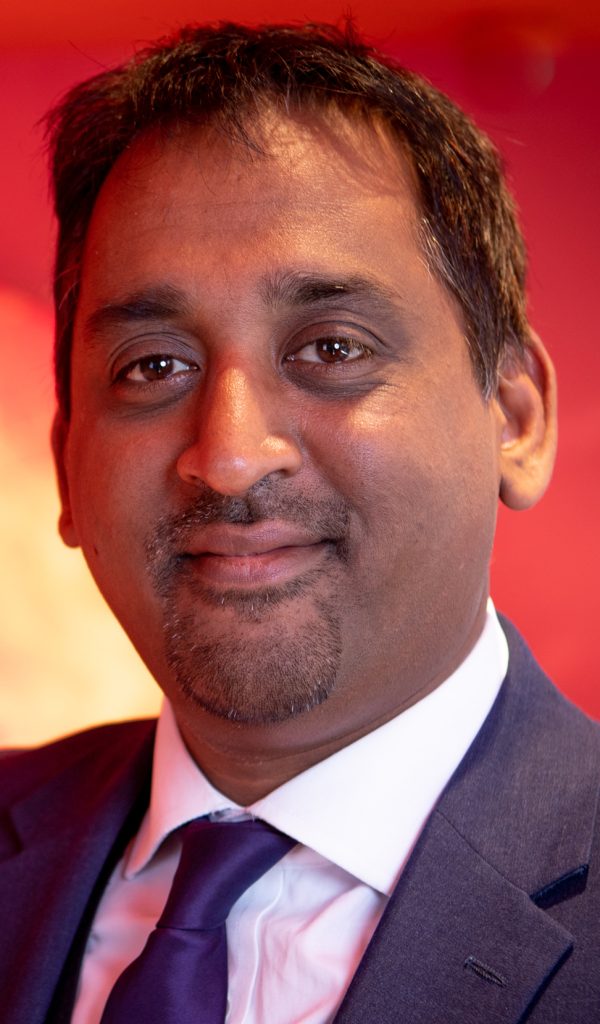At the start of 2020, leaders at GOSH closely monitored the breakout of COVID-19. They correctly anticipated the oncoming pandemic and successfully deployed Zoom’s capabilities in eight days to fight the unknown. Dr. Shankar Sridharan, Consultant Paediatric Cardiologist and Chief Clinical Information Officer at GOSH, tells us more about the implementation and the impacts it has had on the facility and young people.

Innovation and care happen every day at Great Ormond Street Hospital for Children NHS Foundation Trust (GOSH) in London, England. GOSH was one of the first purpose-built children’s hospitals in the UK and is now one of the most digitally able hospitals in Europe. Known as an international centre of excellence in child healthcare, GOSH is where paediatric patients throughout the UK go to receive ground-breaking surgeries, specialised treatment and critical care in 63 different clinical specialities.
During the pandemic, GOSH leaned into that innovative spirit to create a ‘hospital without walls,’ according to Dr. Shankar Sridharan, Consultant Paediatric Cardiologist and Chief Clinical Information Officer at GOSH. The hospital deployed Zoom in eight days to prepare for the pandemic’s surge, which kept its workforce connected and able to deliver care during a global health crisis.
Implementing video-visit capabilities in eight days
At the beginning of 2020, leaders at GOSH began following news of the COVID-19 outbreak. They knew that the world was changing and that the hospital needed to prepare for an unprecedented situation. As a facility with many critically ill young patients, GOSH moved quickly to stand up a solution that would enable care continuity as seamlessly as possible.
“We had dabbled in using video in the past, but nothing scalable. But in January 2020, we realised we needed to have video-visit capabilities,” said Dr. Sridharan.
In eight days, GOSH was able to deploy video-visit capabilities to 5,000 hospital staff and fully integrate Zoom into its electronic patient record (EPR) system — so the organisation was prepared for the inevitable lockdown in March 2020.
“Eight weeks later, we had cancelled every in-person appointment and moved completely online, in response to the COVID-19 lockdown,” added Dr. Sridharan.
A seamless patient experience with Epic
GOSH’s EPR system, Epic, fully deployed in 2019, served as the foundation for the organisation’s video requirements.
“We wanted a video platform that integrated with Epic,” Dr. Sridharan said.
For Dr. Sridharan, evaluating different solutions came down to the quality, safety, security and usability of the platform. “Zoom’s user experience is seamless. It’s built into our workflow so the doctor knows when the patient is there and vice versa. It’s easy to use and the patient can contact us on any device.” added Dr. Sridharan.
Zoom’s integration with Epic enabled GOSH to schedule and launch video visits securely and seamlessly within an Epic workflow.
“We cancelled people’s physical appointments and rescheduled them in Epic with video-visit capabilities,” Dr. Sridharan said. “In that way, the link to the visit is through Epic. This gives us trusted access so you’ve got the right doctor contacting the right patient.”
A new way of working
“We were in a scenario where we had cancelled patient appointments, had a workforce where half of them were offsite — how do you continue to deliver care?” commented Dr. Sridharan.
“We had our video-visit capability to continue delivering care to patients, but we also used video for staff meetings — both were fundamental,” he said. “You need to be able to meet to run a hospital. Operationally, it was a godsend for response meetings and departmental meetings.
“Early on, GOSH used Zoom Webinar to create a virtual chief executive update series, which has continued throughout the pandemic. This was something we had never done before. They’ve become very popular for the dissemination of trusted information, to convey confidence and to let people know what’s happening. It’s really valuable, as a teaching hospital, to be able to do all this.”
Zoom continues to be the platform of choice at GOSH for patient-facing clinical meetings (and multidisciplinary team meetings, or MDTs), teaching and training webinars and international sessions. GOSH even hosted a webinar with doctors from Wuhan, China – where COVID-19 was first reported – to learn about fighting the virus first-hand.
‘Unpausing life’ for children in the hospital
Dr. Sridharan believes the physical, social and emotional aspects of connecting via Zoom are just as important, especially for children in isolation and families going through difficult situations.
“Little children quite like eating together, but our patients are in their rooms because they’ve got cancer or their blood count is low. We’d like to create a way so they can eat lunch with each other over Zoom. It will promote wellness and make them feel not as lonely,” he said.
His team considered how to brighten the lives of young patients who have put a pause on school, activities and home life during a hospital stay. Dr. Sridharan wanted to use Zoom to ‘unpause life’ by allowing children to see and experience their normal environment back home.
“You might have one parent with a sick kid in the hospital and one parent at home with the other children,” he said. “Why can’t we have a portal into that family’s dining room?”
The future of video visits at GOSH
“If there’s one benefit from a crisis, it’s people coming together and taking out obstacles,” Dr. Sridharan said. “We went from a standing start to video-visit capabilities for 5,000 people in eight days. At the time, we hadn’t realised we were creating a ‘hospital without walls.’”
From March 2019 to 2020, fewer than 1% of all outpatient appointments at GOSH were delivered by video. From March 2020 to 2021, 24% of outpatient appointments were being delivered via video. Two-thirds of patients and parents surveyed in the early months of 2021 said they were extremely likely to recommend a virtual visit.
A survey of clinicians found that 95% of clinicians were likely to continue to use video visits after the pandemic. That’s why GOSH is exploring how to go beyond its current video visit capabilities and leverage Zoom in more ways to provide safer, better and kinder care.
“We would like to do more with multi-party visits through Epic — having an interpreter online at the same time, having two doctors online with a patient or two family members at different sites,” Dr. Sridharan said. “There isn’t a day I don’t use Google to look something up and there isn’t a day I don’t use Zoom to communicate. It’s been an incredibly important part of life.”
Click below to share this article

